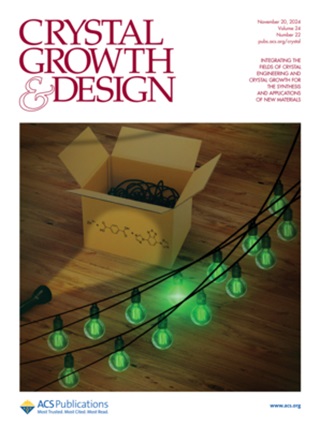Great Enhancing Overall Performances of YSO:Ce Scintillation Crystals by Ni Codoping
IF 3.4
2区 化学
Q2 CHEMISTRY, MULTIDISCIPLINARY
引用次数: 0
Abstract
Cerium-doped yttrium oxyorthosilicate (YSO:Ce) scintillation crystals are widely used in mixed radiation field detection, radioactive isotope monitoring, and other fields due to their excellent scintillation properties and low cost. However, the poor coincidence time resolution severely limits their further promotion. In order to resolve this problem, this work first designed and conducted research on Ni2+-codoped YSO:Ce crystals, and a series of YSO:Ce,xNi (x = 0, 0.3, 0.6, and 1.5 atom %) crystals were grown using the Czochralski method. It is found that codoping with 0.6 atom % Ni2+ can improve the overall scintillation performances of YSO:Ce crystals. In particular, the ratio of light output to scintillation decay time significantly improved by 71%, which is currently the best optimization result reported in the orthosilicate-based scintillation crystals systems. In addition, the afterglow level has been optimized by 2 orders of magnitude, and the energy resolution has been improved from 9.2% to 6.7%, greatly enhancing its potential commercial applications. This is mainly attributed to Ni2+ codoping, significantly reducing the concentration of carrier traps in YSO:Ce,xNi crystals, reducing the emission proportion of the slow-emitting center Ce2, and introducing the fast scintillation center Ce4+ into the crystals. Based on the experimental results, the possible mechanisms of the above phenomenon were discussed in the article.

通过掺杂镍大幅提高 YSO:Ce 闪烁晶体的整体性能
掺铈氧硅酸钇(YSO:Ce)闪烁晶体因其优异的闪烁特性和低成本而被广泛应用于混合辐射场探测、放射性同位素监测等领域。然而,较差的重合时间分辨率严重限制了其进一步推广。为了解决这一问题,本研究首先对掺杂 Ni2+ 的 YSO:Ce 晶体进行了设计和研究,并采用 Czochralski 法生长了一系列 YSO:Ce,xNi (x = 0、0.3、0.6 和 1.5 原子%)晶体。研究发现,掺入 0.6 原子%的 Ni2+ 可以提高 YSO:Ce 晶体的整体闪烁性能。特别是,光输出与闪烁衰减时间之比显著提高了 71%,这是目前在正硅酸盐基闪烁晶体系统中报道的最佳优化结果。此外,余辉水平也优化了 2 个数量级,能量分辨率从 9.2% 提高到 6.7%,大大提高了其潜在的商业应用价值。这主要归功于 Ni2+ 共掺,大大降低了 YSO:Ce,xNi 晶体中载流子陷阱的浓度,降低了慢发射中心 Ce2 的发射比例,并在晶体中引入了快闪烁中心 Ce4+。根据实验结果,文章讨论了上述现象的可能机制。
本文章由计算机程序翻译,如有差异,请以英文原文为准。
求助全文
约1分钟内获得全文
求助全文
来源期刊

Crystal Growth & Design
化学-材料科学:综合
CiteScore
6.30
自引率
10.50%
发文量
650
审稿时长
1.9 months
期刊介绍:
The aim of Crystal Growth & Design is to stimulate crossfertilization of knowledge among scientists and engineers working in the fields of crystal growth, crystal engineering, and the industrial application of crystalline materials.
Crystal Growth & Design publishes theoretical and experimental studies of the physical, chemical, and biological phenomena and processes related to the design, growth, and application of crystalline materials. Synergistic approaches originating from different disciplines and technologies and integrating the fields of crystal growth, crystal engineering, intermolecular interactions, and industrial application are encouraged.
 求助内容:
求助内容: 应助结果提醒方式:
应助结果提醒方式:


